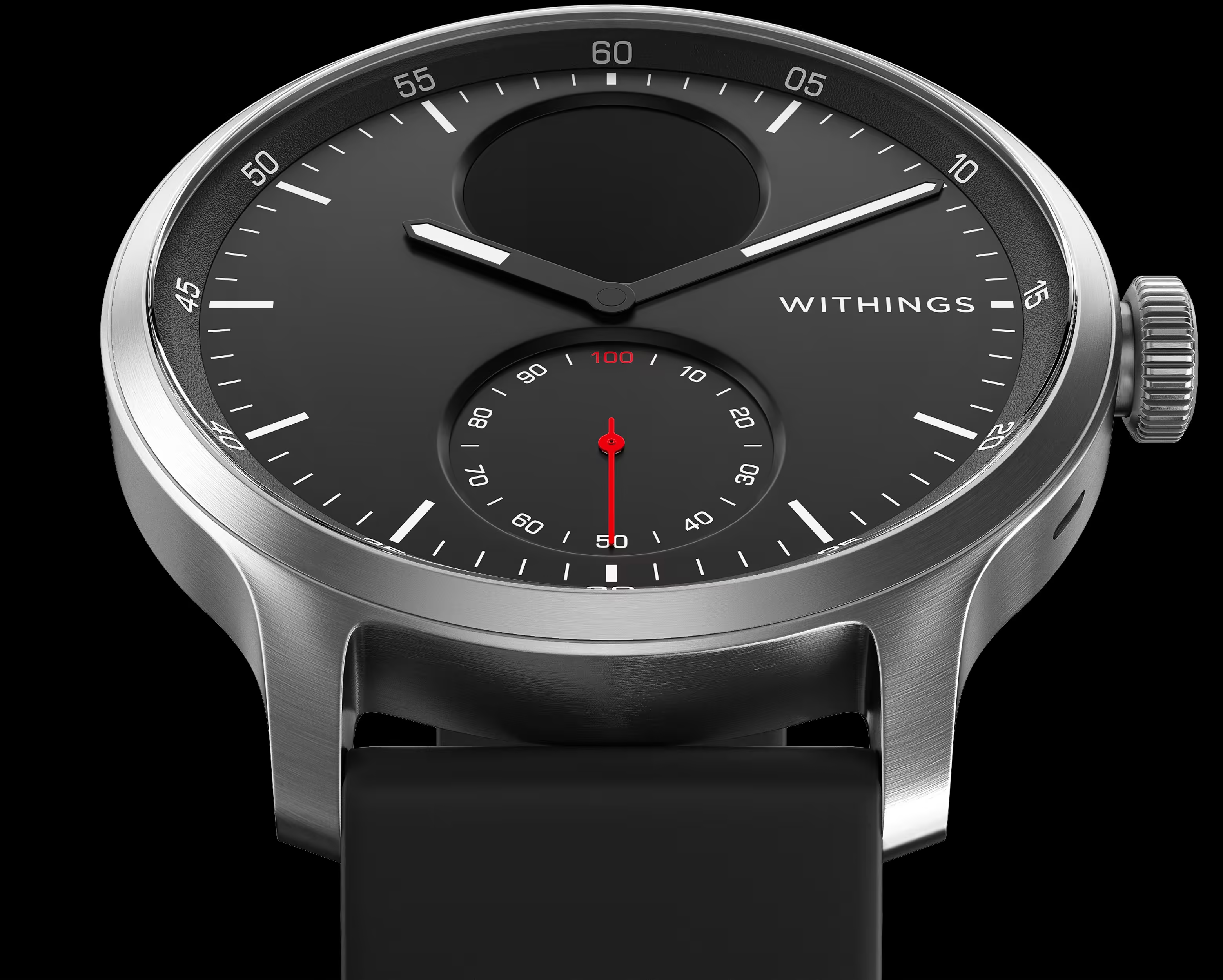Hybrid Smartwatch with ECG, Heart Rate & Oximeter – ScanWatch | Withings
The hybrid smartwatch that detects atrial fibrillation, with ECG and an oximeter for SpO2 measurements—plus activity and sleep tracking.
The world’s most advanced health wearable
- HEART HEALTH MONITORING
- BREATHING DISTURBANCES TRACKING
- SLEEP ANALYSIS
- ACTIVITY TRACKING
- DURABLE DESIGN
ScanWatch is the first hybrid smartwatch to continuously scan vital parameters to detect heart health conditions and help improve overall fitness.
Developed with professionals from world-renowned institutions, ScanWatch boasts a medical-grade ECG, an oximeter for SpO2 measures, and an exceptional battery life of up to 30 days.
Additional information
| 38mm model | 38.4mm diameter (1.6’’), 13.2mm thickness (0.52’’), 18mm wristband width (0.70’’), 58g (watch only) |
|---|---|
| 42mm model | 42mm diameter (1.65’’), 13.7mm thickness (0.54’’), 20mm wristband width (0.79’’), 83g (watch only) |
| Charging time | Approximately 2 hours to 100%. About 1 hour to 80% |






Reviews
There are no reviews yet.